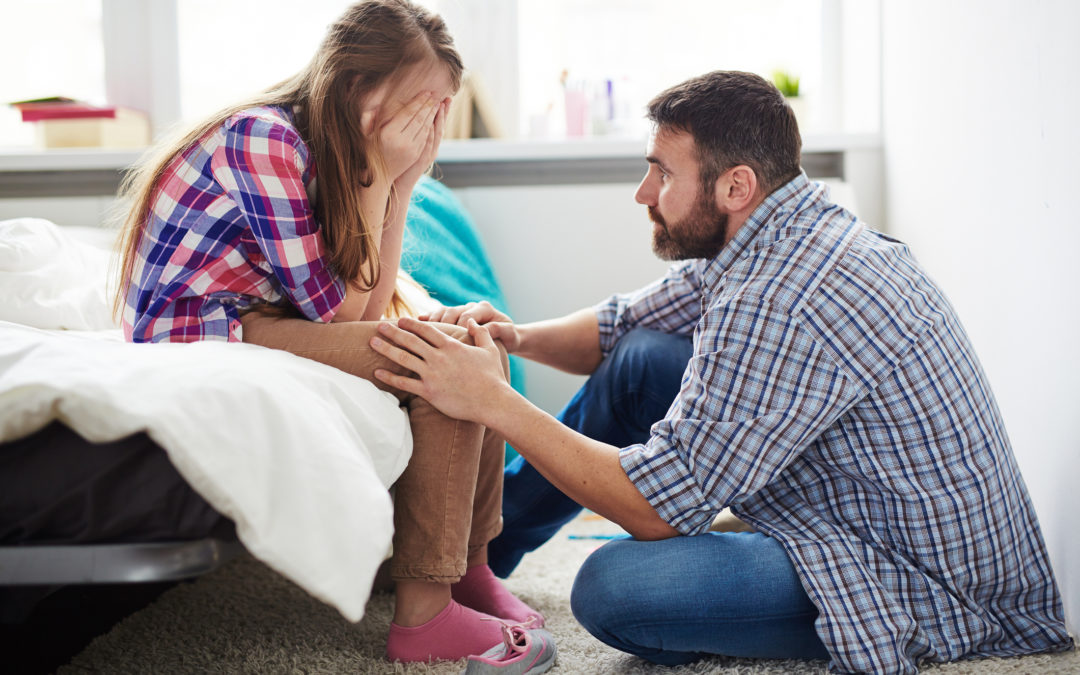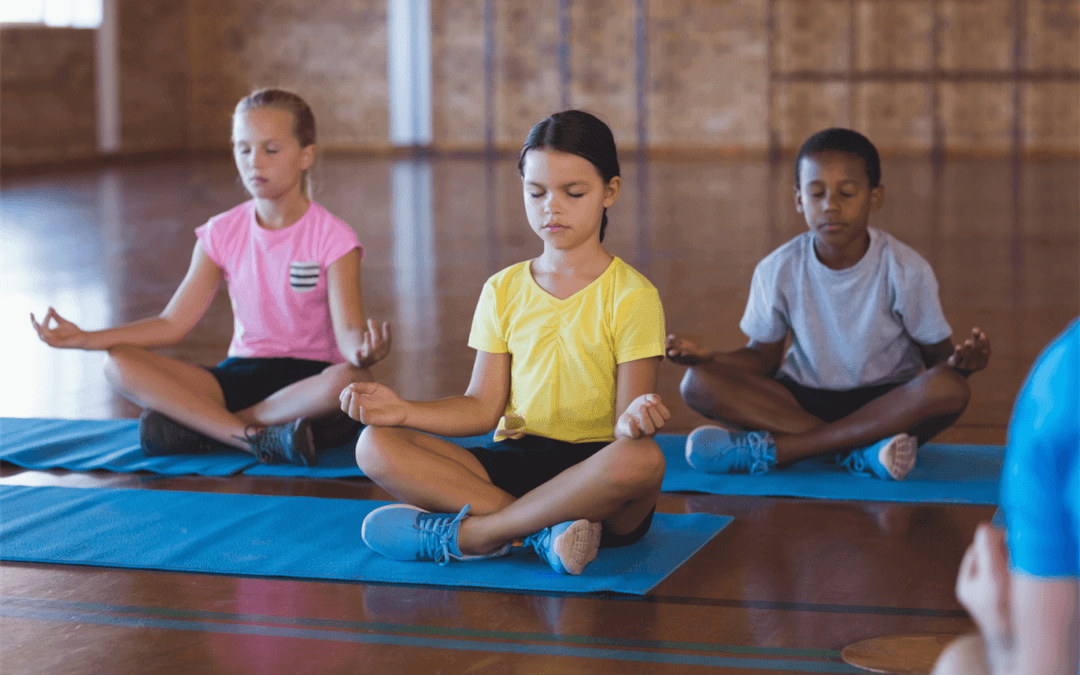
by North Shore Child & Family Guidance Center | Sep 20, 2017 | Blog
In a recent blog, we talked about the importance of teaching mental health as part of school curriculum. In fact, Gov. Andrew Cuomo signed legislation last year that requires schools to provide instruction in mental health on or after July 1, 2018.
But earlier legislation also required schools to include education on the use of alcohol, tobacco and other substances.
All of these areas are extremely important to bring into the school curriculum. While parents play a huge role in their child’s education, schools are where your kids spend a great part of their time five days a week, and it would be a shame—and also against New York State law—for schools to miss the opportunity to share important information to aid in children’s mental and physical health.
One area that’s relatively new in the discussion of substance abuse involves vaping, described as follows by the National Center on Addiction and Substance Abuse.
Vaping is the act of inhaling and exhaling the aerosol, often referred to as vapor, which is produced by an e-cigarette or similar device. The term is used because e-cigarettes do not produce tobacco smoke, but rather an aerosol, often mistaken for water vapor, that actually consists of fine particles. Many of these particles contain varying amounts of toxic chemicals, which have been linked to cancer, as well as respiratory and heart disease.
Clearly, the idea that e-cigarettes are a healthy alternative to tobacco is dead wrong—in fact, most e-cigarettes contain nicotine solutions. Sadly, the use of e-cigarettes among teens and even middle schoolers is increasing dramatically. According to the Centers for Disease Control and Prevention, more than 3 million teens used e-cigs in 2015, a tenfold increase over four years. Middle schoolers are also using them in much larger numbers, with the rate of e-cig use rising to 5 percent, from 0.6 percent in 2011.
Unlike with tobacco, the makers of e-cigarettes are allowed to use sweet flavorings like vanilla or other candy and dessert flavors, clearly an attempt to hook younger users on their product. Since studies show that e-cigarette use is higher than the use of regular cigarettes, it appears that the marketing is working, and that the mistaken idea that these products are safe has taken hold.
So what is a parent to do? First, let your kids know that e-cigarettes are not safe alternatives to cigarettes. The studies increasingly show that they can cause:
- Damage to the brain, heart and lungs
- Cancerous tumor development
- Preterm deliveries and stillbirths in pregnant women
- Harmful effects on brain and lung development, when use occurs during fetal development or adolescence
They also probably don’t know that most e-cigarettes contain nicotine, which is a known carcinogen and also is highly addictive. It also increases the risk of a variety of both physical and mental health problems later in life. So, if they tell you, Mom, these aren’t like cigarettes, you can tell them the reality.
Another point that’s important for kids to know: the additives, heavy metals, ultrafine particles, and other ingredients in e-cigarettes are toxic carcinogens—hardly a safe alternative to regular cigarettes. In addition, according to a Yale study, nearly one in five e-cigarette users has also used e-cigarettes for marijuana, or marijuana byproducts like hash oil. Some teens are also using these devices to vaporize opiates and forms of “synthetic weed” such as K2 and Spice.
“One important fact is that adolescents use vapes because there is no smell,” explains Kathy Knaust, Clinical Supervisor for the Drug and Alcohol Program at the Guidance Center’s Leeds Place location. “Marijuana use is often detected by the strong odor burning it gives off, but with vaping use it is not detected by odor so they need to be very aware of the physical and behavioral effects of various substances.” Some of those effects include short-term memory loss, anxiety, hallucinations and feelings of panic.
Hopefully, with the schools backing up these facts about vaping, your kids will heed your message and stay away from this new form of substance abuse. But if you discover that your kids are vaping, take it seriously. Contact the Guidance Center at (516) 626-1971.
Sources:
https://www.centeronaddiction.org/e-cigarettes/about-e-cigarettes/10-surprising-facts-about-e-cigarettes
https://yourteenmag.com/drugs-alcohol/using-e-cigarettes-for-marijuana
https://www.centeronaddiction.org/e-cigarettes/recreational-vaping/what-vaping
https://www.theverge.com/2016/12/29/14117964/e-cigarette-vaping-increase-teens-cdc-health-risks
by North Shore Child & Family Guidance Center | Sep 13, 2017 | Press Releases
Roslyn Heights, NY, September 12, 2017 — On Tuesday evening September 19th, North Shore Child & Family Guidance Center will host a fundraiser for its Children’s Center at Nassau County Family Court. The event will be held at Tesoro’s Ristorante, located at 967 Old Country Road in Westbury, and will feature entertainment by Paul Lauren, musician and soul crooner. The event, which will feature cocktails and a buffet, will run from 5:30 p.m. – 8:30 p.m. For registration info, visit www.northshorechildguidance.org/events, or email dmartin@northshorechildguidance.org or call 516-626-1971, ext. 309. Tickets are $125 each.
The Children’s Center provides care and early learning to almost 2,000 children annually, ages 6 weeks – 12 years, while their parents or guardians are conducting court business. Dr. Nellie Taylor-Walthrust, Director of The Leeds Place (under which the Children’s Center operates), says that the Center focuses on early childhood education.
“The Children Center is not a babysitting service,” explains Dr. Taylor-Walthrust. “It is an early learning center. Often this is a child’s first exposure to an early learning environment. Every aspect of the Center promotes learning by which the children can explore new things in a safe, structured and professionally supervised setting.”
The fundraiser is co-chaired by Robert C. Mangi, Esq. and John M. Zenir, Esq., P.C. and is sponsored by an array of local law firms and other businesses, including Abrams, Fensterman, Fensterman, Eisman, Formato, Ferrara, Wolf & Carone, LLP, DiMascio & Associates, LLP, Gassman Baiamonte Gruner, P.C., Mangi & Graham, LLP, the Pessala Family, and In Memory of Hon. Burton S. Joseph.

by North Shore Child & Family Guidance Center | Sep 13, 2017 | Blog
It’s the ultimate tragedy. When any child, teen or adult commits suicide, the reverberations can devastate friends, destroy families and spread fear and sorrow throughout communities.
Suicide knows no race, gender or economic status—and teens or even younger children are at risk. According to the Centers for Disease Control and Prevention (CDC), suicide is the third leading cause of death among individuals between the ages of 10 and 14, and the second leading cause of death among individuals between the ages of 15 and 34. It is far more rare—though not unheard of—for children younger than 10 to commit suicide, but it does happen. About four out of every 500,000 children below the age of 12 commit suicide annually, reports the CDC.
First, parents must be open to believing the risk is real and not assume that their child or teen’s behavior is just a normal part of adolescence, says Elissa Smilowitz, LCSW-R, Coordinator of Triage and Emergency Services at North Shore Child & Family Guidance Center. “Parents say, ‘Teenagers are supposed to be moody, aren’t they?’ Yes, but it is the severity of the mood that parents need to look at.”
Smilowitz points out some of the warning signs: “Look for changes in their behavior that aren’t typical for them.”
She cites:
- Withdrawing from friends and family
- Sleeping all day
- Being depressed and crying often
- Posting suicidal thoughts on the Internet
- Talking about death and not being around anymore
- Cutting themselves
- Increasing aggressiveness or irritability
Other things to consider: Is there a family history of mental illness, suicide or substance abuse? A study by Johns Hopkins Children’s Center reports that those who lost a parent to suicide as children or teens were three times more likely to commit suicide than children and teenagers with living parents.
So, what do you do if you suspect your child or teen may be suicidal? The first step is to consult a mental health professional. The Guidance Center has a Triage & Emergency Services program that offers a rapid response to psychiatric emergencies. Our team will assess if the situation appears urgent and will make an appointment to see the child within 24 to 48 hours (if it’s deemed extremely urgent, we do advise you go to the Emergency Room).
It’s very important that you communicate your concern to your child in a loving, non-judgmental way, says Smilowitz. “Talking about suicide will not make your child more likely to act upon it,” she says. “The opposite is true. Also, let them know that you believe that getting help is not a weakness, but rather shows their strength.”
If you or a member of your family are in crisis, call the toll-free National Suicide Prevention Lifeline at 1-800-273-TALK (8255), available 24 hours a day, 7 days a week
Sources:
http://www.hopkinsmedicine.org/news/media/releases/children_who_lose_a_parent_to_suicide_more_likely_to_die_the_same_way
http://www.slate.com/articles/news_and_politics/recycled/2010/04/do_children_commit_suicide.html

by North Shore Child & Family Guidance Center | Sep 6, 2017 | Blog
September is National Yoga Month, designed to educate the public about the health benefits of yoga and to inspire a healthy lifestyle.
How does yoga relate to our mission to restore and strengthen the emotional wellbeing of children and families? According to the American Psychological Association, yoga relieves stress and anxiety, reduces muscle tension and inflammation, and calms the nervous system. It has even been shown to help reduce depression.
Another area that’s shown to improve from yoga practice is PTSD, and that’s been clear to Amalia Sirica, a therapist at North Shore Child & Family Guidance Center who has used yoga with some of her therapy groups. “In people who experience trauma and PTSD, the mind is always on high alert,” she explains. “We’ve seen this alarm response calm down even after just one session of yoga. I can’t say enough about its benefits.”
In an article in Yoga Journal, yoga teacher and licensed psychotherapist Ashely Turner put it this way: “Yoga is a psychology—the whole practice helps us work with the nature of the mind, the nature of being a human, how emotions live in our bodies, how they affect our behavior and our minds.”
Here are some of the top benefits of yoga in the treatment of mental health conditions.
- Yoga helps increase your sense of self-esteem. Healthy self-esteem is a critical component to feeling emotionally healthy. Yoga encourages you to develop a nonjudgmental relationship with your thoughts, so you’re less likely to think of yourself as “bad” or “flawed” or “crazy.”
- Yoga encourages you to be more mindful. Living in the present moment and not obsessing about the past or future leads to a calmer, more accepting state of mind.
- Yoga creates a relaxation response within the body. A quiet mind and body help both with your mood and your sleep.
- Yoga increases “feel good” neurotransmitters known as GABA (gamma-aminobutyric acid). This allows for a more tranquil mind, allowing your brain to take a break and reduce the pace of obsessive thoughts, anxiety and depression.
- Yoga helps you relax and makes you feel more rested, energetic and in a positive mood. When you feel good, you become more productive and are able to contribute and participate in other activities that can help your emotional mental health.
Yoga can also be a great way to become more social, if you practice in a class as opposed to home on your own. But however you fit yoga into your lifestyle, it’s sure to be a benefit to people of all ages. Here’s to your health!
Sources: https://www.psychologytoday.com/blog/get-hardy/201305/take-stand-yoga-today
https://www.ncbi.nlm.nih.gov/pubmed/8505745/
https://www.yogajournal.com/lifestyle/5-ways-yoga-is-good-for-your-mental-health

by North Shore Child & Family Guidance Center | Aug 30, 2017 | Blog
Reading, writing and arithmetic. For many years, that’s what was viewed as the main curriculum for schools to cover.
But for those who believe we should teach not just academics but also focus on a student’s wellbeing, there’s some good news out of Albany. Legislation signed by Governor Cuomo in 2016 requires that public schools in New York State begin providing instruction in mental health on or after July 1, 2018. The new legislation adds mental health education to areas of learning that were already required by law, including education on the use and misuse of alcohol, tobacco and other substances.
Why is this so important? These alarming statistics tell the story: One in five adolescents ages 13-18 is diagnosed with a mental health problem, yet only 40% of them get help. The average time from onset of symptoms to seeking help is 8 to 10 years. According to Centers for Disease Control and Prevention, one in 12 high school students attempts suicide, the third leading cause of death for 10 to 24 year olds. In other words, the problem is of epidemic proportions, and our kids need to learn about ways to get help in the place they spend most of their days—in school.
Andrew Malekoff, Executive Director of North Shore Child & Family Guidance Center, says, “Teaching about mental health in schools and educating to reduce stigma is long overdue. There is great misunderstanding and fear among many who have erroneous ideas about people with mental illness. Consequently, young people suffering with mental illness walk around school feeling isolated, believing that there’s something inherently wrong with them that will never change.”
These children and teens often feel shunned, unlike their peers who have a physical health problem and who have others rally around them.
Some parents may worry that their children might be frightened by information on mental health, or decide to “diagnose” their classmates. While we recognize that there can be differing opinions, the benefits of bringing these lessons into the classroom far outweigh any concerns. Another statistic that shows how important this education is for our kids’ futures: about 50% of students age 14 and older who are living with a mental illness drop out of high school. Youngsters’ mental health and their ability to learn and become productive citizens in the community and workplace go hand-in-hand.
A caring school community can offer a young person a safety net of meaningful and helpful connections. Mental health education in schools can begin with mental wellness practices for children as early as four or five years old, for example, by teaching social skills and how to manage angry or scary feelings.
For too long, schools have waited until there was a tragedy before addressing these issues. Our children will benefit from knowing the facts about mental health. It could be a lifesaver.




